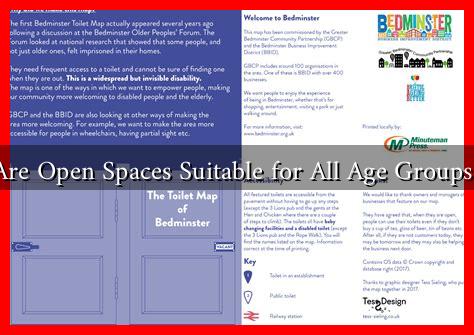-
Table of Contents
Are Open Spaces Suitable for All Age Groups?
Open spaces, such as parks, gardens, and recreational areas, play a crucial role in urban planning and community well-being. They provide a sanctuary for relaxation, social interaction, and physical activity. However, the question arises: Are these open spaces truly suitable for all age groups? This article explores the benefits and challenges of open spaces for different demographics, supported by research and case studies.
The Importance of Open Spaces
Open spaces are essential for various reasons, including:
- Health Benefits: Access to green spaces has been linked to improved mental and physical health. Studies show that spending time in nature can reduce stress, anxiety, and depression.
- Social Interaction: Parks and open areas serve as communal hubs where people of all ages can gather, fostering social connections and community spirit.
- Environmental Impact: Green spaces contribute to biodiversity, improve air quality, and help mitigate urban heat effects.
Open Spaces for Children
Children benefit immensely from open spaces, which provide opportunities for play, exploration, and learning. Playgrounds, sports fields, and nature trails encourage physical activity and social skills development. According to the National Recreation and Park Association (NRPA), children who have access to parks are more likely to engage in physical activities, which is crucial for combating childhood obesity.
Moreover, open spaces can stimulate creativity and cognitive development. For instance, a study published in the journal Environmental Science & Technology found that children who play in natural settings exhibit higher levels of creativity compared to those who play in urban environments.
Open Spaces for Adults
For adults, open spaces offer a venue for exercise, relaxation, and socialization. Activities such as jogging, yoga, and group sports are commonly enjoyed in parks. A survey by the Centers for Disease Control and Prevention (CDC) revealed that adults who live near parks are more likely to meet physical activity guidelines.
Additionally, open spaces can serve as venues for community events, such as farmers’ markets, concerts, and festivals, which foster a sense of belonging and community engagement. For example, the annual “Parks and Recreation Month” celebrated in July encourages adults to explore local parks and participate in activities.
Open Spaces for Seniors
Seniors also benefit from open spaces, but their needs differ from those of younger age groups. Accessibility is a significant concern; parks must be designed with features that accommodate mobility challenges. This includes:
- Wheelchair-accessible paths
- Benches for resting
- Clear signage and maps
Research indicates that seniors who engage with nature experience improved mental health and cognitive function. A study published in the journal Health & Place found that older adults who spend time in green spaces report lower levels of depression and higher life satisfaction.
Challenges and Considerations
While open spaces offer numerous benefits, there are challenges to consider:
- Safety: Concerns about crime and safety can deter individuals, particularly seniors and parents with young children, from using open spaces.
- Maintenance: Poorly maintained parks can lead to negative experiences, discouraging use by all age groups.
- Inclusivity: Open spaces must cater to diverse interests and abilities to be truly inclusive.
Case Studies: Successful Open Space Initiatives
Several cities have successfully created open spaces that cater to all age groups. For example:
- New York City’s High Line: This elevated park has transformed an old railway into a vibrant green space that attracts visitors of all ages, featuring art installations, gardens, and seating areas.
- Melbourne’s Royal Botanic Gardens: These gardens offer a variety of programs for children, adults, and seniors, including guided walks, workshops, and relaxation areas.
Conclusion
Open spaces are indeed suitable for all age groups, provided they are designed with inclusivity, accessibility, and safety in mind. They offer numerous benefits, from promoting physical health to fostering social connections. However, challenges such as safety concerns and maintenance must be addressed to ensure that these spaces serve their intended purpose effectively. By learning from successful case studies and prioritizing the needs of diverse populations, communities can create open spaces that truly benefit everyone.
For more information on the importance of open spaces, visit the National Recreation and Park Association.


